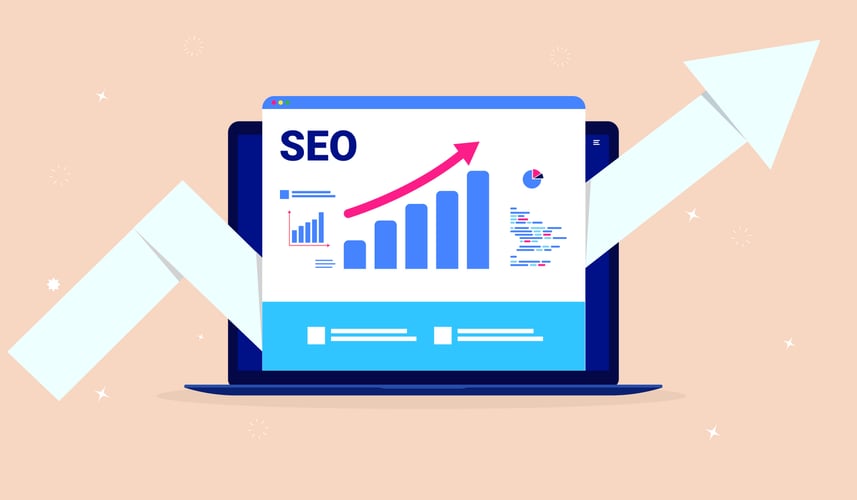Stop Forcing Content Into Bad Design: Why Financial Products Should Shape Your Website Design


Don't Miss An Episode, Subscribe Now
When banks or credit unions hire a web designer who doesn't understand financial products, the result is often a visually impressive site that fails functionally. Disclosures are hard to manage. Rates can’t be updated without a developer. There’s no place for comparison charts, lead capture tools, or multiple user journeys. Now the marketing team is stuck crafting workarounds for a site that was supposed to make their lives easier.
Design-First Thinking Creates Functional Gaps
When a website is designed without a deep understanding of financial products, critical functionality is often left out. A few of the common pieces left out of the design phase are:- Rates
- Your current rates are one of the top reasons people come to your website, so give the users what they came for without the hassle on your end. Current rates should be prominently displayed on each product page where users come looking. On top of that, marketers and lenders should be able to easily update your rates daily, if needed.
- Disclosure Text
-
Most industries that web designers are used to working with don't have the strict regulations of the financial industry. If space for disclosure text isn't built in from the beginning, this can be a struggle in the content phase.
-
- Financial Calculators
-
Calculators not only drive traffic to your website, they also help people understand what their future payment could look like. And the should function as a strong lead generation tool for the bank or credit union. Anyone using your financial calculators is a lead you should be nurturing, but this functionality is frequently left out of initial web design.
-
These gaps aren’t just inconvenient—they’re costly. They slow down marketing efforts, create compliance risks, and frustrate both staff and users. All because the design came first, and the institution’s real needs came later.
A User-First Experience Starts with the Right Structure
Your website isn’t just a brochure, it’s a tool that should guide users through different financial journeys. A first-time homebuyer has different needs than an investor purchasing an additional rental property. Different users require different entry points, different resources, and different conversion paths. When your site isn’t structured around these user journeys, everyone ends up in the same place: a generic product page with too little context and too few next steps.A user-first experience requires more than clean navigation, it demands intentional design that supports financial education, nurturing phases, and decision-making tools along the way. That means:
- Educational content should be built into product pages, not buried in your blog archives.
- Rate information needs to be displayed dynamically and contextually, not hidden behind PDFs or on a rates page separate from product information.
- You need comparison tools that help users self-select the right account or loan.
- Site messaging should change based on what you know about a user. If you know they visited your auto loan page, make your home page focused on auto loans next time they come to your website. Nurture them with the right message until they convert.
- Lead capture shouldn't interrupt your user's journey. It should align with intent, and offer what the user needs when they are ready for it.
A good project manager keeps meeting fatigue and email overload at bay, but not by sacrificing information sharing. And that’s where having the right tools comes in!
Get the Website Budget Approval You Need! Download:
13 Shocking STATS & QUOTES That You MUST Share With Your Executive Team
What to Look for in a Bank or Credit Union Website Partner
Not every designer or developer is equipped to build for the unique needs of a financial institution. A true partner doesn’t just ask what your site should look like, they dig into how your products are different from your competitors, how your team updates rates, and which products are services are your highest priorities. Look for a partner who has:
- Financial Knowledge
- Starting with a strong foundation and history of working with banks and credit unions eliminates a lot of hurdles. Find a partner who already understands your products and services, and knows what your basic website needs will be.
- Product-Driven Discovery
- The discovery phase of your new website project shouldn't be all about the look and feel of the site. Find a partner who dives into your unique products and builds a website around what makes you unique in your market.
- Custom Content
- Your needs, your brand voice, your priorities...they're all unique. Find a partner who writes custom website content for every page that will drive traffic, nurture leads, and convert your audience to loyal members.
- User-Specific Content
- Every user is on a journey, and they're all different. Someone shopping for their first home needs different content than someone shopping for their third. When it comes to different products, or even the same product for different user journeys, work with a partner who caters your content to show the right message to the right person at the right time.
The right partner will design with your users, your products, and your long-term goals in mind so you don’t have to compromise function for design. Your website should work for you, not create more work for you.
FI GROW Solutions Can Help!
A visually striking website means nothing if it can’t support the needs of your institution or your users. When design isn't informed by your products, your marketing team is left forcing critical content into spaces that were never built to hold it.
But when your website is shaped by your products, services, and user journeys from the beginning, the design is more intuitive and the content supports your members' needs.
Don’t settle for a site that just looks the part. Build one that works as hard as you do. At FI GROW Solutions, we work exclusively with banks and credit unions, and we’re ready to make your next website project happen! Contact us if you’re looking for a partner who brings both digital and financial expertise.





Blog comments